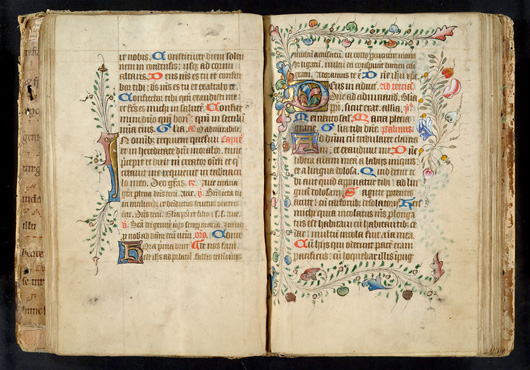The History of Reading///Reading History///By-Alison Tara Walker

Image of a 15th century English Book of Hours from the Collection of Richard and Mary Rouse at UCLA Special Collections Library .
What is Paleography? |
|
Paleography can be defined as the study and interpretation of ancient scripts (OED). Such a discipline is important for the History of Reading because most scripts from pre-modern periods cannot easily be read without first interrogating one’s own methods of reading. Secondly, forms of reading and writing are not stable during the medieval period, as the image on the left suggests. Depending on the manuscript, page, and time period, font (script), images (illuminations), and material (vellum and paper) can vary. Such physical changes alter the way a reader approaches these manuscripts and based on these features, a reader can determine where the manuscript was created and the time period in which it was written. Thus, paleography--whether pre- or postmodern--can be considered an inportant step in deconstructing and understanding the discreet units that make up a book. Studying medieval writing allows scholars to understand how social change influences the material production of books, something that has largely been overlooked by scholars of book history. |